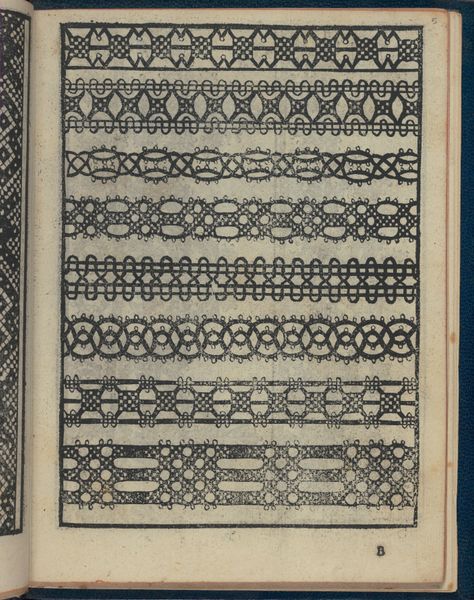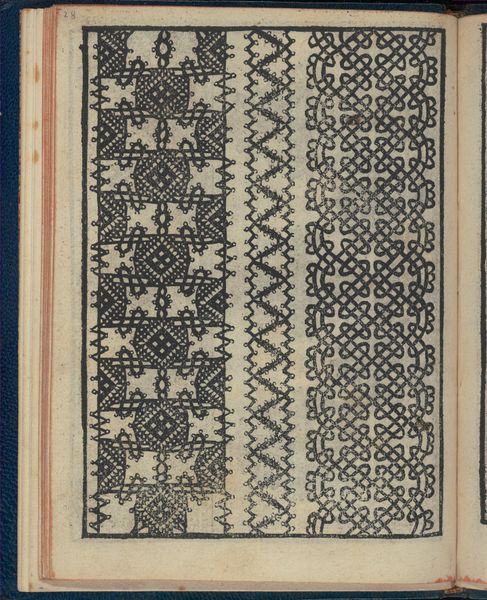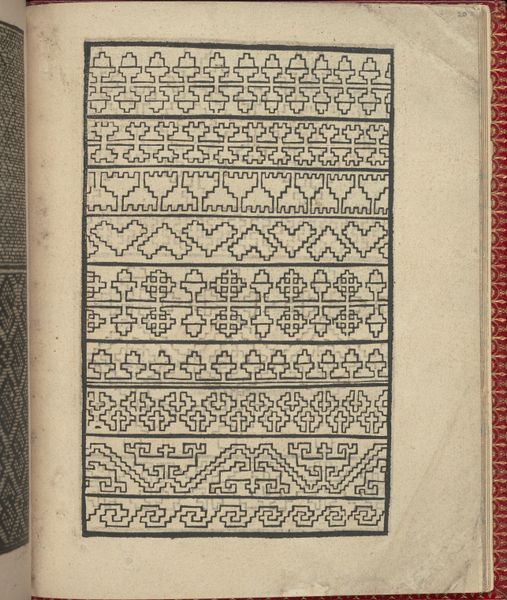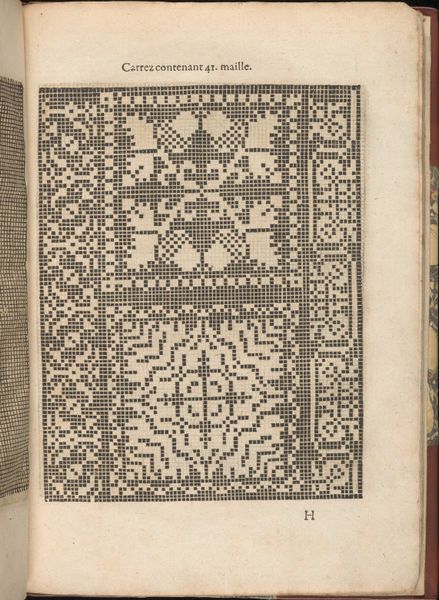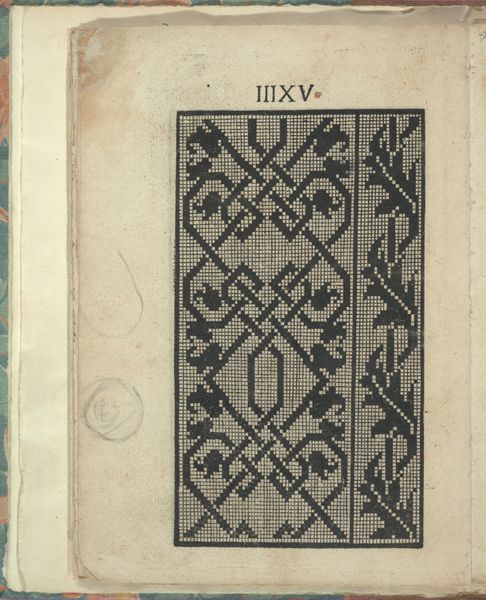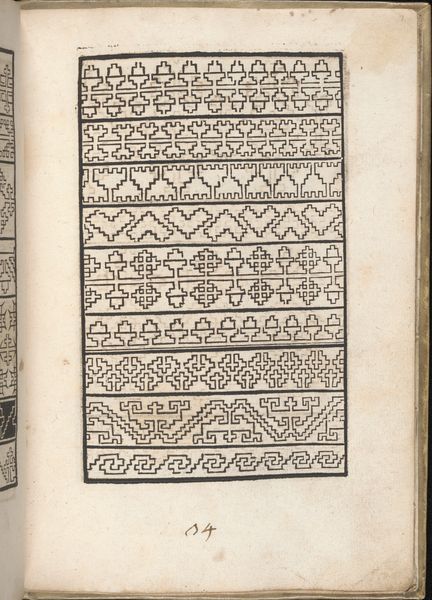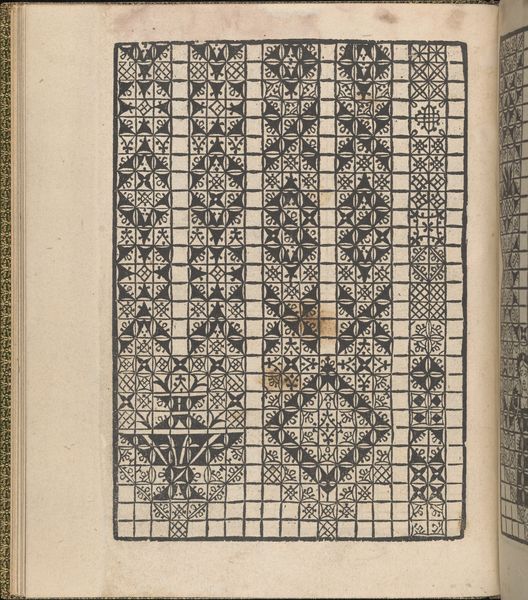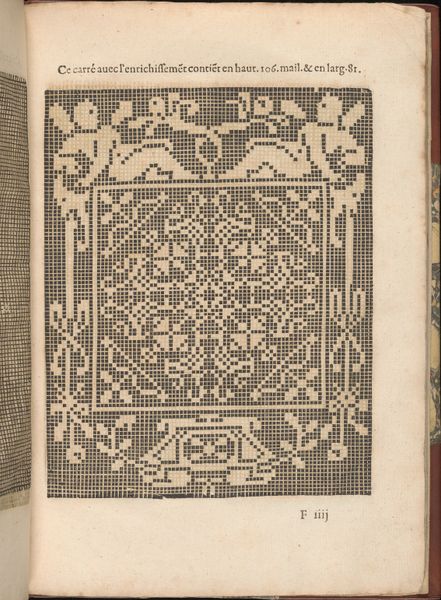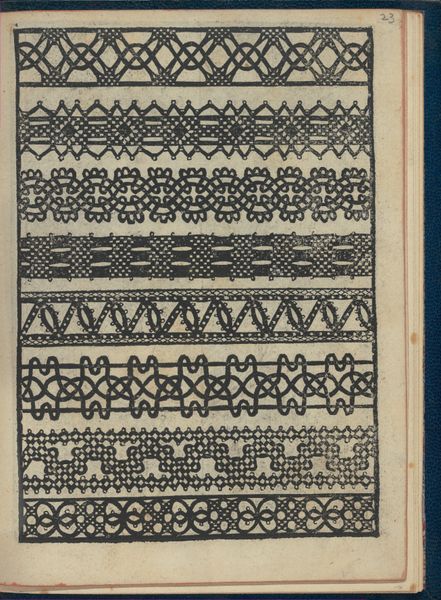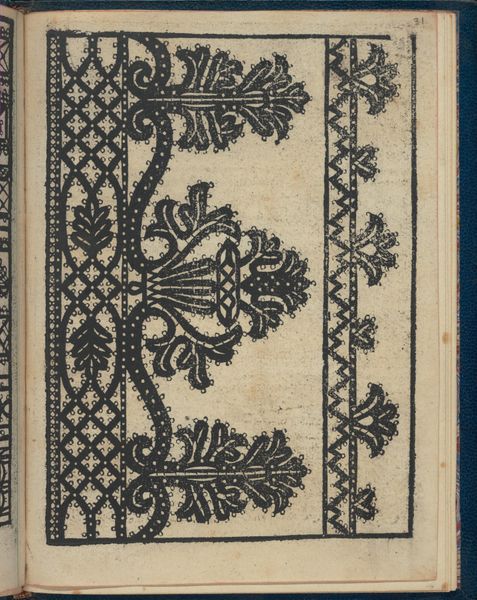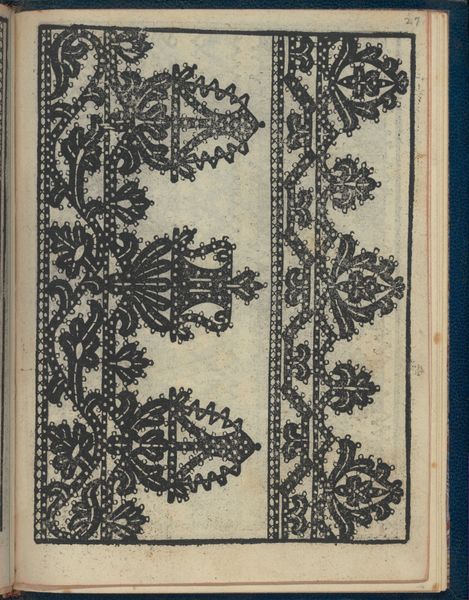
Le Pompe: Opera Nova, page 5 (recto) 1557
0:00
0:00
drawing, ornament, print, paper, woodcut
#
drawing
#
ornament
# print
#
book
#
paper
#
11_renaissance
#
geometric
#
woodcut
#
line
Dimensions: Overall: 8 1/16 x 5 7/8 in. (20.5 x 15 cm)
Copyright: Public Domain
Editor: Here we have "Le Pompe: Opera Nova, page 5 (recto)," a woodcut print from 1557 by Giovanni Battista and Marchio Sessa, housed here at the Met. It's a page filled with different lace patterns; they almost look like complex knotwork. How do you interpret this work? Curator: The persistence of these knot and geometric forms fascinates me. Consider how these interlaced designs speak across cultures. You see something similar in Celtic art, even in illuminated manuscripts, centuries earlier, and across various textile traditions. The interweaving lines can symbolize interconnection, the cyclical nature of life, or even spiritual concepts like eternity. What do you think the original audience would have thought of them? Editor: Well, given this was a pattern book for lacemaking, maybe they just saw pretty designs? Something practical? Curator: Perhaps, but remember the Renaissance context! Geometric order was believed to reflect divine harmony. These weren't *just* pretty patterns; they were echoes of a deeper cosmic order, made accessible for daily life. Notice how some designs incorporate repeating floral elements, hinting at growth and fertility alongside the precision of geometry. They have layered meaning. Editor: That’s a different perspective. The practicality of it had distracted me, but now that you mention it, it does feel like a kind of... visual language? Curator: Precisely! And the language keeps being reinterpreted. These Renaissance patterns were themselves revivals of classical motifs and became popular once more through mass production via printmaking. Visual languages evolve and persist, subtly shaping our world. Editor: That's amazing to consider. It’s more than just a collection of patterns; it's a continuous story told through symbols. Curator: Exactly. Recognizing these echoes across time enriches our understanding of the image itself and our broader cultural heritage.
Comments
No comments
Be the first to comment and join the conversation on the ultimate creative platform.

